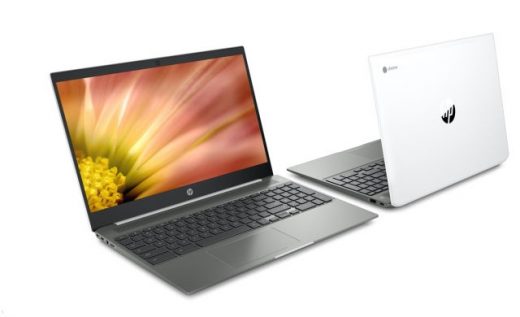The best Chromebooks you can buy
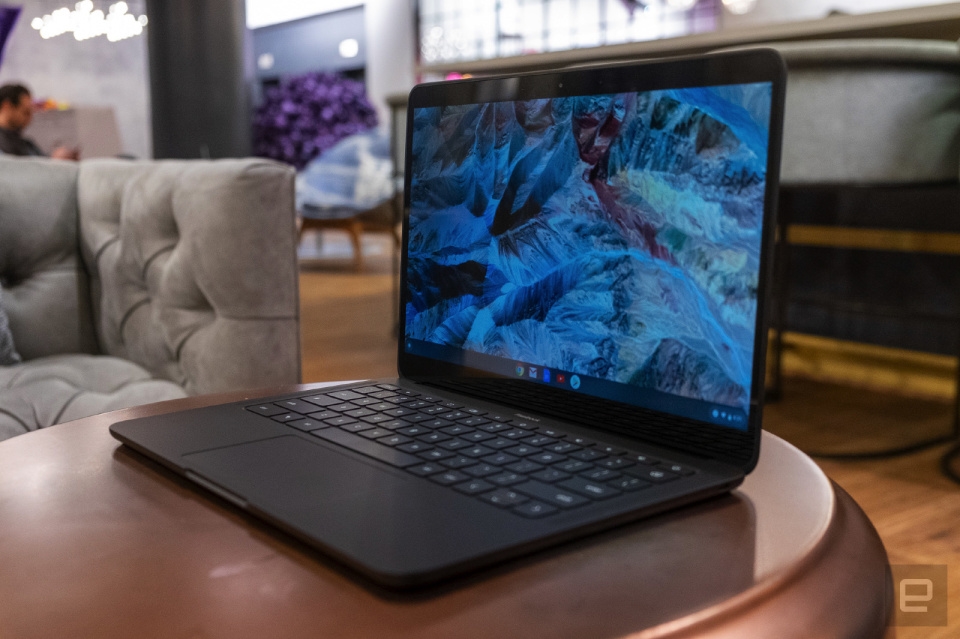
Chromebooks have a reputation for being cheap and limited, but that hasn’t been true for a while. The combination of years of software updates and laptop manufacturers taking Chromebooks more seriously means there are a ton of good Chrome OS computers that work well as everyday drivers. Of course, there are an unnecessary number of Chromebooks on the market from dozens of manufacturers, so finding the right one for you is easier said than done. Fortunately, I’ve tried enough Chromebooks at this point to know what to look for and what to avoid when you’re in the market.
What is Chrome OS, and why would I use it over Windows?
That’s probably the number one question about Chromebooks. There are plenty of inexpensive Windows laptops on the market, so why bother with Chrome OS? Glad you asked. For me, the simple and clean nature of Chrome OS is a big selling point. If you didn’t know, it’s based on Google’s Chrome browser, which means most of the programs you can run are web-based. There’s no bloatware or unwanted apps to uninstall like you often get on Windows laptops, it boots up in seconds and you can completely erase to factory settings just as quickly.
What do Chromebooks do well, and when should you avoid them?
Put simply, Chromebooks are great at anything web-based. Browsing, writing, streaming music and video and using various social media sites are among the most common things people do on Chromebooks. Unsurprisingly, they also work great with Google services like Photos, Docs, Gmail, Drive, Keep and so on. Yes, any computer that can run Chrome can do that too, but the lightweight nature of Chrome OS makes it a responsive and stable platform.
As I mentioned before, Chrome OS can run Android apps — so if you’re an Android user, you’ll find some nice ties between the platforms. You can get most of the same apps that are on your phone on a Chromebook and keep info in sync between them. You can also use some Android phones as a security key for your Chromebook or instantly tether your laptop to use mobile data.
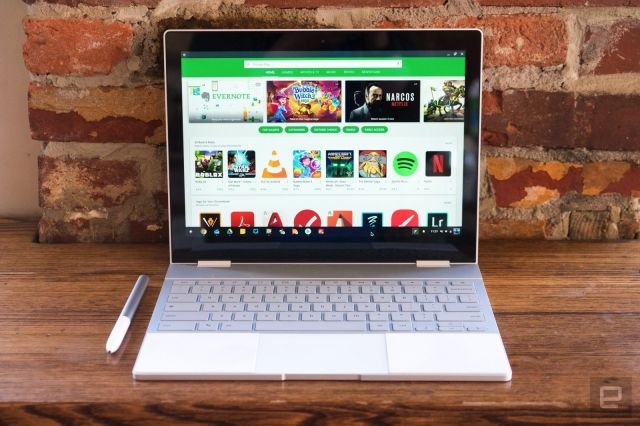
Google continues to tout security as a major differentiator for Chromebooks, and I think it’s definitely a factor worth considering. The first line of defense is auto-updates — Chrome OS updates download quickly in the background and a fast reboot is all it takes to install the latest version. Google says that each web page and app on a Chromebook runs in its own sandbox, as well, so any security threats are contained to that individual app. Finally, Chrome OS has a self-check called Verified Boot that runs every time a device starts up. Beyond all this, the simple fact that you generally can’t install traditional apps on a Chromebook means there are a lot less ways for bad actors to access the system.
As for when to avoid them, the answer is simple: if you rely heavily on a specific native application for Windows or a Mac, chances are good you won’t find the exact same option on a Chromebook. That’s most true in fields like photo and video editing, but it can also be the case in environments like law or finance. Plenty of businesses run on Google’s G Suite software these days, but more still have very specific requirements that a Chromebook might not match. If you’re an iPhone user, you’ll also miss out on the way the iPhone easily integrates with an iPad or Mac, as well. For me, the big downside is not being able to access iMessage on a Chromebook.
Finally, gaming is almost entirely a non-starter, as there are no native Chrome OS games of note. You can install Android games from the Google Play Store, but that’s not what most people are thinking of when they want to game on a laptop. That said, Google’s game-streaming service Stadia could change the equation significantly. The service is still going through some growing pains, but it remains the only way to get recent, high-profile games working on a Chromebook. It’s not a perfect experience, but the lag issues that can crop up are more a product of Stadia itself and not unique to running it on Chrome OS.
What are the most important specs for a Chromebook?
Chrome OS is lightweight and usually runs well on fairly modest hardware — so the most important thing to look for might not be processor power or storage space. That said, I’d still recommend that you get a Chromebook with a relatively recent Intel processor, ideally an eighth-generation or newer M3 or i3. Most non-Intel Chromebooks I’ve tried haven’t had terribly good performance, though Lenovo’s Chromebook Duet 2-in-1 runs surprisingly well on its MediaTek processor.
As for RAM, 4GB is enough for most people, though 8GB isn’t a bad idea if you want to future-proof your investment or if you’re a serious tab junky. Storage space is another place where you don’t need to spend too much — 64GB should be fine for almost anyone. If you plan on storing a lot of local files or loading up your Chromebook with Linux or Android apps, get 128GB. But for what it’s worth, I’ve never felt like I might run out of local storage when using Chrome OS.
Things like the keyboard and display quality are arguably more important than sheer specs. The good news is that you can find less expensive Chromebooks that still have pretty good screens and keyboards that you won’t mind typing on all day. Many cheap Chromebooks still come with tiny, low-resolution screens, but at this point there’s no reason to settle for anything less than 1080p. Obviously, keyboard quality is a bit more subjective, but you shouldn’t settle for a mushy piece of garbage.
Google has an Auto Update policy for Chromebooks, and while that’s not a spec per se, it’s worth checking before you buy. Basically, Chromebooks get regular software updates automatically for about six years from their release date (though that can vary a bit from device to device). This support page lists the Auto Update expiration date for virtually every Chromebook ever, but a good rule of thumb is to buy the newest machine you can to get the most support.
How much should I spend?
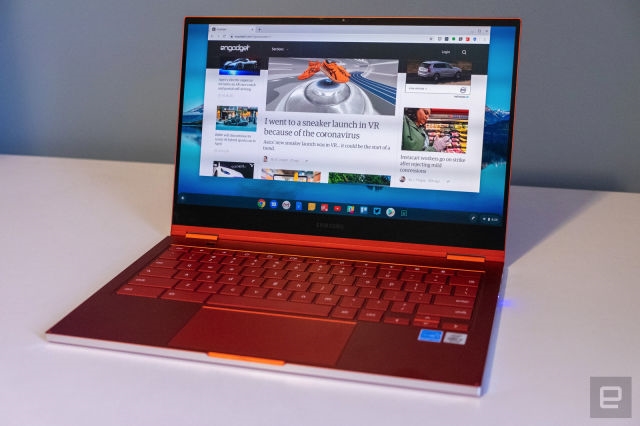
Chromebooks started out notoriously cheap, often under $300. But as they’ve gone more mainstream, they’ve transitioned from being essentially another take on the netbook to the kind of laptop you’ll want to use all day. As such, prices have increased a bit over the last few years. At this point, you should expect to spend at least $400 if you want a solid daily driver. There are still many budget options out there that may be suitable as couch machines or secondary devices, but if you want a Chromebook that can be your all-day-every-day laptop, $400 is the least you can expect to spend.
There are also plenty of premium Chromebooks that approach or even exceed $1,000, but I don’t recommend spending that much. Generally, that’ll get you better design with more premium materials as well as more powerful internals and extra storage space. Of course, you sometimes pay for the brand name, as well. But, the specs I outlined earlier are usually enough. Google’s Pixelbook is a great Chromebook, but it’s well over two years old at this point and shouldn’t still be priced at $999. Another premium Chromebook, Samsung’s Galaxy Chromebook, does almost everything right, but has terrible battery life. For the most part, you don’t need to spend more than $850 to get a premium Chromebook that’ll last you years.
Engadget Picks
Best overall: Lenovo Flex 5 Chromebook
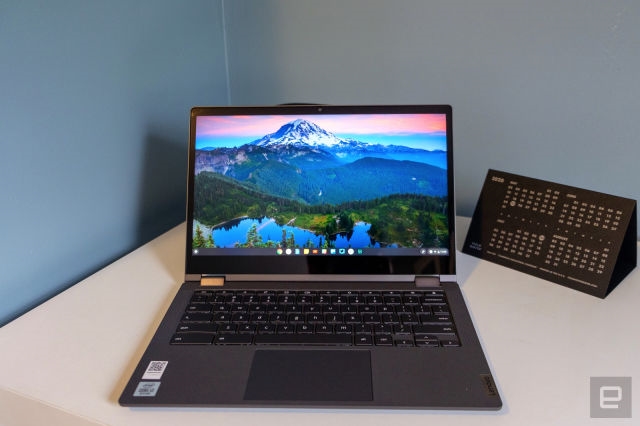
Look beyond the awkward name and you’ll find a Chromebook that does just about everything right that’s also a tremendous value. The Flex 5 Chromebook gets all the basics right: the 13-inch 1080p touchscreen is bright, though it’s a little hard to see because of reflections in direct sunlight. It runs on a 10th-generation Intel Core i3 processor, the eight-hour battery life is solid, and the backlit keyboard is one of the best I’ve used on any laptop lately, Chromebook or otherwise. And all this can be had for $410 on Amazon — significantly less than many comparably-speced options I’ve tried recently.
Naturally, Lenovo cut a few corners to hit that price. Most significantly, it only has 4GB of RAM and 64GB of storage. Normally, I wouldn’t recommend anyone buy a computer with those specs — but Chrome OS is far less dependent on local storage. Unless you were planning to store a ton of movies or install a huge variety of Android apps, 64GB is enough for moderately advanced use. I was concerned about the non-upgradeable 4GB of RAM, but my testing showed that the IdeaPad Flex 5 can run plenty of tabs and other apps without many hiccups. If you push things hard, you’ll occasionally have to wait for tabs to refresh if you haven’t viewed them recently, but other than that this is a solid performer, particularly for the price.
Other things in the IdeaPad Flex 5’s favor include that it has both a USB-C and a USB-A port and a 360-degree convertible hinge. I personally don’t find myself flipping laptops around to tablet or stand mode very often, but it’s there if you like working in those formats. It’s not the slimmest (.66 inches) or lightest (3 pounds) out there, but that’s totally reasonable considering the price. Ultimately, I think the Flex 5 hits the sweet spot for a large majority of potential Chromebook buyers out there, providing a level of quality and performance that’s pretty rare to find at this price point.
Buy Lenovo Flex 5 Chromebook at Amazon – $410
Upgrade pick: Google Pixelbook Go
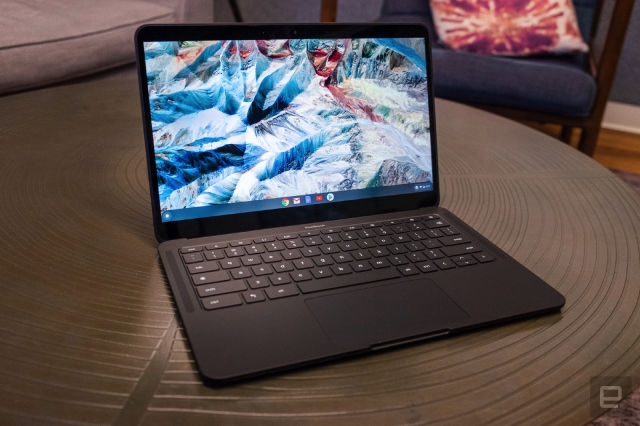
Google’s Pixelbook Go sticks close to the standard Chromebook script, but raises the bar in a few key ways. The base $649 model has an eight-generation Intel m3 processor, 64GB of storage and 8GB of RAM. You’ll give up a little processing power to the i3 chip found in Lenovo’s IdeaPad Flex 5, but doubling the RAM might be a better choice for serious multitaskers.
The Pixelbook Go also has superior battery life, lasting over 13 hours in our video playback test (the IdeaPad clocked in just under eight hours). It also features probably my favorite laptop keyboard around, and the 13.3-inch touchscreen has better viewing angles and more contrast than the IdeaPad’s screen. And at a half-inch thick and 2.3 pounds, it’s significantly more compact than the IdeaPad Flex 5. Its design is also certainly more fun, if that matters to you — the matte black looks great, while the “not pink” model adds a nice pop of color. The Go doesn’t have a 360-degree hinge, but I don’t take any points away for that.
If you really want to future-proof your investment, Google also has an $849 Pixelbook Go model with an eighth-generation Core i5 processor, 8GB of RAM and 128GB of storage. That’s the high point of what people should spend on a Chromebook, but it should last you years.
Buy Pixelbook Go at Best Buy – $649
If you want a larger screen: HP Chromebook 15
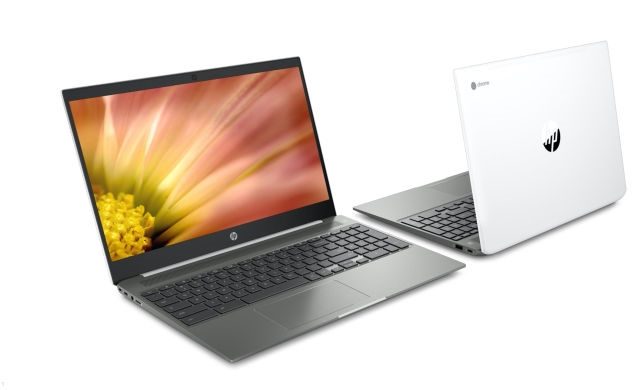
Of course, the simplicity is also a major drawback for some users. Not being able to install native software can be a deal breaker if you’re, say, a video editor or a software developer. But there are also plenty of people who do the vast majority of their work in a browser these days — unless I need to edit photos for a review, I can do my entire job on a Chromebook.
Google has also added support for Android apps on Chromebooks, which greatly expands the amount of software available. The quality varies widely, but it means you can do more with a Chromebook beyond just web-based apps. For example, you can install the Netflix app and save videos for offline watching; other Android apps like Microsoft’s Office suite and Adobe Lightroom are surprisingly capable. Between Android apps and a general improvement in web apps, Chromebooks are more than just a browser.
(71)

